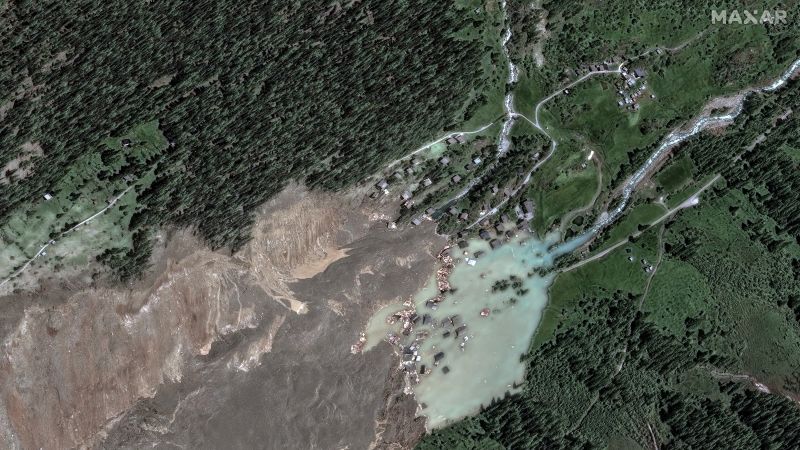Identifying Death Cap Mushrooms: Preventing A Deadly Australian Mistake

Welcome to your ultimate source for breaking news, trending updates, and in-depth stories from around the world. Whether it's politics, technology, entertainment, sports, or lifestyle, we bring you real-time updates that keep you informed and ahead of the curve.
Our team works tirelessly to ensure you never miss a moment. From the latest developments in global events to the most talked-about topics on social media, our news platform is designed to deliver accurate and timely information, all in one place.
Stay in the know and join thousands of readers who trust us for reliable, up-to-date content. Explore our expertly curated articles and dive deeper into the stories that matter to you. Visit Best Website now and be part of the conversation. Don't miss out on the headlines that shape our world!
Table of Contents
Identifying Death Cap Mushrooms: Preventing a Deadly Australian Mistake
Australia's stunning natural landscapes offer a bounty of foraging opportunities, but they also harbour a deadly danger: the death cap mushroom (Amanita phalloides). Responsible for the majority of fatal mushroom poisonings worldwide, this insidious fungus masquerades as edible varieties, leading to tragic consequences. This article provides crucial information to help you identify death cap mushrooms and avoid a potentially fatal mistake.
Understanding the Threat:
The death cap mushroom contains amatoxins, potent toxins that attack the liver and kidneys, often causing irreversible damage and death. Symptoms, which can take 6-24 hours to appear, initially mimic mild flu, but rapidly progress to severe liver and kidney failure. Early identification and immediate medical attention are absolutely critical for survival.
Key Features of the Death Cap Mushroom:
Identifying a death cap mushroom requires careful observation. Here's what to look for:
- Cap: Pale green, olive green, yellow-green, or even white. It's typically 5-15cm in diameter, with a smooth, slightly sticky surface when moist. The cap often starts round and becomes flatter with age.
- Gills: White gills, free from the stem (not attached to it). These gills are closely spaced and numerous.
- Stem: White to pale green, often with a bulbous base. It frequently has a skirt-like ring (annulus) around the stem. The base of the stem usually has a cup-like structure called a volva, which is often partially buried underground. This is a key identifying feature.
- Spore Print: A crucial identification method involves collecting a spore print. Death cap mushrooms have a white spore print. (For details on performing a spore print, refer to reputable mycology websites).
Commonly Confused Mushrooms:
Several edible mushrooms resemble the death cap, increasing the risk of accidental ingestion. These include some species of:
- Straw mushrooms: These are smaller and generally lack the volva and distinctive greenish hue. However, careful observation is necessary.
- Parasol mushrooms: While larger, these can be confused with young death caps. A key difference lies in the easily detachable scales on the parasol mushroom's cap, which death caps lack.
What to Do if You Suspect Ingestion:
- Immediate medical attention: Contact emergency services (000 in Australia) or your local poison control center immediately.
- Sample collection: If possible, carefully collect the remaining mushrooms for identification purposes. This can help medical professionals determine the appropriate treatment.
- Do not induce vomiting: Unless specifically instructed by medical professionals, do not induce vomiting.
Prevention is Key:
- Never consume wild mushrooms unless 100% certain of their identification. Even experienced foragers can make mistakes.
- Attend a reputable mushroom identification course: Gaining expert knowledge is crucial for safe foraging.
- Consult multiple resources: Use several reliable identification guides and cross-reference your findings.
Resources:
- Your local health authority: Provides up-to-date information on poisonous plants and mushrooms.
- The Royal Botanic Gardens Sydney: A valuable resource for Australian flora identification. (link to relevant page)
Conclusion:
While enjoying the beauty of Australian nature, remember that the death cap mushroom represents a serious threat. By carefully studying its characteristics and taking precautions, you can significantly reduce your risk of accidental poisoning and ensure a safe foraging experience. Remember, when in doubt, throw it out. Your life depends on it.

Thank you for visiting our website, your trusted source for the latest updates and in-depth coverage on Identifying Death Cap Mushrooms: Preventing A Deadly Australian Mistake. We're committed to keeping you informed with timely and accurate information to meet your curiosity and needs.
If you have any questions, suggestions, or feedback, we'd love to hear from you. Your insights are valuable to us and help us improve to serve you better. Feel free to reach out through our contact page.
Don't forget to bookmark our website and check back regularly for the latest headlines and trending topics. See you next time, and thank you for being part of our growing community!
Featured Posts
-
 Rising Risks The Deadly Allure Of Mountain Climbing
Jun 08, 2025
Rising Risks The Deadly Allure Of Mountain Climbing
Jun 08, 2025 -
 Kepa To Arsenal Artetas Interest In Chelsea Goalkeeper Confirmed
Jun 08, 2025
Kepa To Arsenal Artetas Interest In Chelsea Goalkeeper Confirmed
Jun 08, 2025 -
 Positive Developments In Chelseas Pursuit Of Arsenal Player 5m Fee
Jun 08, 2025
Positive Developments In Chelseas Pursuit Of Arsenal Player 5m Fee
Jun 08, 2025 -
 Iga Swiateks World Ranking Crumbles French Open Loss Sends Her To No 7
Jun 08, 2025
Iga Swiateks World Ranking Crumbles French Open Loss Sends Her To No 7
Jun 08, 2025 -
 David Beckham And The Royal Circle A New Partnership
Jun 08, 2025
David Beckham And The Royal Circle A New Partnership
Jun 08, 2025
Latest Posts
-
 Ukrainian Exodus The Mounting Pressure On Civilians In Donbas
Sep 14, 2025
Ukrainian Exodus The Mounting Pressure On Civilians In Donbas
Sep 14, 2025 -
 La Lista Vip Majo Aguilar Veracruz Y Una Pelicula De Terror Para Valientes
Sep 14, 2025
La Lista Vip Majo Aguilar Veracruz Y Una Pelicula De Terror Para Valientes
Sep 14, 2025 -
 Is Ilia Topuria The Next Mc Gregor Fighter Hints At Presidential Run
Sep 14, 2025
Is Ilia Topuria The Next Mc Gregor Fighter Hints At Presidential Run
Sep 14, 2025 -
 Tonights Saturday Night Live Host And Musical Guest Lineup For September 13
Sep 14, 2025
Tonights Saturday Night Live Host And Musical Guest Lineup For September 13
Sep 14, 2025 -
 Millie Bobby Browns Baby News Reactions From The Stranger Things Cast
Sep 14, 2025
Millie Bobby Browns Baby News Reactions From The Stranger Things Cast
Sep 14, 2025
